 Up to the mid-20th century, aprons were among the most popular pieces of women’s clothing – everyday, festive, traditional ensembles, etc. Aprons were used throughout the world, practically in every corner of our planet. Women of any social class, status, financial position, and ethnic group wore aprons of different design. Why is that? Why so many females added an apron to their outfit? If this garment had an entirely practical purpose, queens and high-status noblewomen wouldn’t wear it, but they did! We see so many ornate lace aprons in the photos and portraits, for instance, from the 18th and 19th centuries.
Up to the mid-20th century, aprons were among the most popular pieces of women’s clothing – everyday, festive, traditional ensembles, etc. Aprons were used throughout the world, practically in every corner of our planet. Women of any social class, status, financial position, and ethnic group wore aprons of different design. Why is that? Why so many females added an apron to their outfit? If this garment had an entirely practical purpose, queens and high-status noblewomen wouldn’t wear it, but they did! We see so many ornate lace aprons in the photos and portraits, for instance, from the 18th and 19th centuries.
This article was inspired by a fun video on PrettyShepherd YouTube channel. You’ll find the link at the end of the post.
Practical purpose
Of course, the first thing we think about when we see aprons is their practical purpose. Everyday aprons are made from such materials as linen, cotton, and other cheap and washable fabrics. You can wash the apron often, and the skirt underneath it stays clean. That’s why working women covered their dresses or skirts with a simple apron, and that’s why modern females still prefer to use an apron when cooking or doing some other chores.
Women often wiped their hands on the apron during their chores – whether it was cooking or feeding animals or weeding the flowerbed, etc. That’s handy. Needless to say, aprons got dirty very quickly, so females needed many aprons to replace the dirty one with a clean piece. You could have only one Sunday best outfit but you needed a dozen or more aprons. An apron can be switched extremely easily and quickly because it’s the uppermost garment only tied with a string at the waist.


Baltic traditional aprons, hand-woven and hand-embroidered
The aprons of 17th-19th-century noblewomen also provided some level of protection for their everyday and festive costumes, though it wasn’t the main reason why ladies used them. It’s always easier to buy or order a new apron – a comparatively small piece of fabric, simple in design – than the whole dress. At the balls and receptions, women ate and drank, so the spilled food and liquids would stain only the apron, which could be removed or replaced.
Financial aspect
Everyday aprons meant for work were rather cheap. You just take a rectangular piece of cloth, add some strings, and voila! your apron is ready. Such aprons didn’t have any embellishments or maybe had very few if the female wanted them. Other items of the apparel, even when talking about day-to-day attire, were more expensive or labor-intensive to make. Fabrics were costly, hand-woven fabrics took a lot of time, so comparing the financial value of a skirt and an apron, there was a big difference.
Don’t have a bag? Use your apron
In the past, aprons were often used to carry things. There were no plastic bags you could carry in your pocket in case you needed it. Handmade bags were bulky and people had few of them, so they didn’t usually have bags with them everywhere they went. But what if you suddenly got something you need to carry home? No bag, no large pockets. Where to put it? That’s when aprons get handy once again. You can’t carry things in your skirt because it would leave your legs bare, but you easily can hold the apron as high as you need to. And it can house large amount of goods (for example, fruit or veggies). Besides, you use only one hand to hold the apron, while the other is free to do whatever you need – open doors, pick up goods, scratch your nose)), etc.
Folk skirts need an apron. Why?
Many vintage folk skirts are tied by two strings at the waist. There were no elastic waistbands 100 or more years ago, so skirts usually had wider openings so that women could put them on. Sure, they could use buttons, hooks & eyes, lacing, or other fasteners to close the gap but didn’t want to be bothered by fastening them every single day.
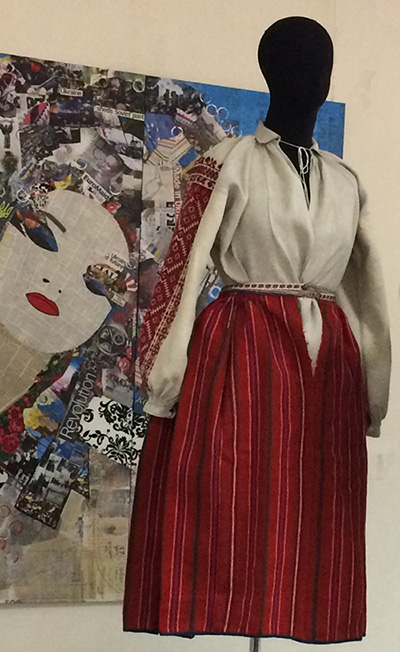
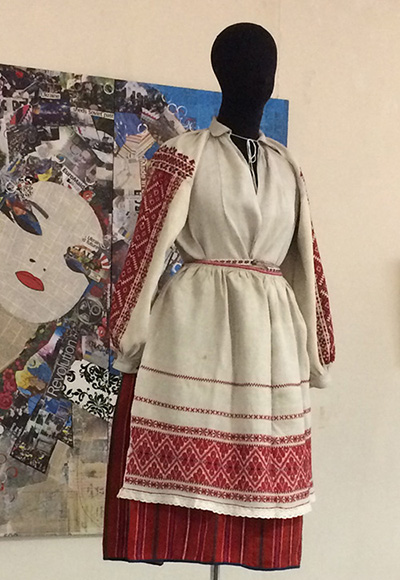
After the skirt was tied, the slit remained (at the side or front), so they needed something to cover this slit. Aprons were the most obvious choice.
Some traditional skirts even have a simpler weave or no embellishments at the front because this area was covered by the apron – they were able to save time and money due to this.


Festive aprons as adornments
Another important purpose of an apron is its decorative quality. A lot of women used ornate aprons with their special-occasion outfits. They were a part of a traditional festive costume, a peasant’s Sunday best, a ceremonial or some visiting ensemble of middle-class and high-class women, etc. Even royal women used costly and beautifully embellished aprons with their outfits.
Such aprons were made from expensive fabrics, like silk, velvet, brocade, etc. They were adorned with lace, embroidery, dyed prints, hand-woven patterns, appliques, beading, ribbons and bows, and various other decorations. These adornments depended on the period, social position of the wearer, her taste, available resources, her skill (because many women created and decorated their own aprons), and other factors.
All in all, for centuries, aprons were among the most practical, handy, and multi-purpose female garments. That’s why women liked them so much and wore both in everyday life and for special occasions. Today, aprons are still in use as a part of folk costumes and as a convenient garment for daily chores. But, of course, they’re not as popular as they used to be.
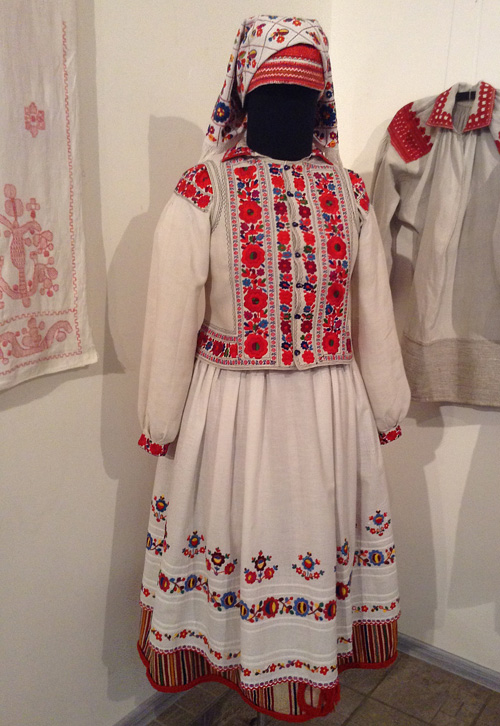
Festive traditional Ukrainian attire from Lviv region. The apron is embellished with lovely floral embroidery
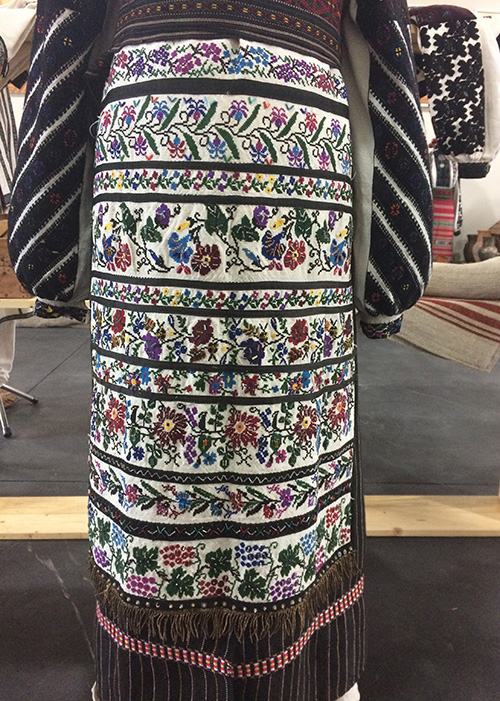
Ornate Ukrainian apron richly adorned with embroidery and beading
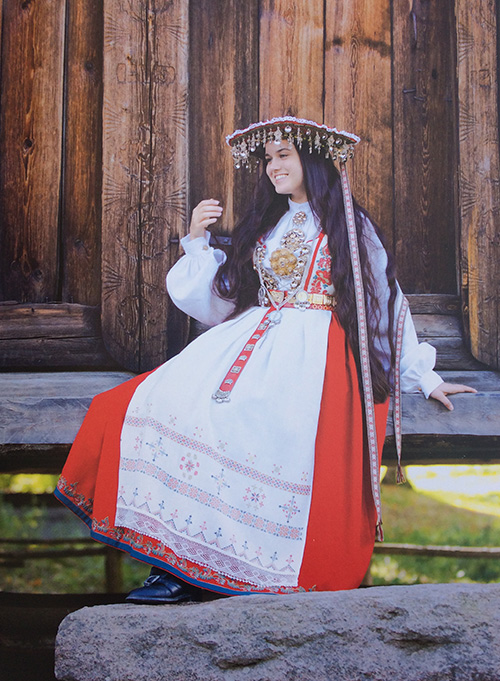
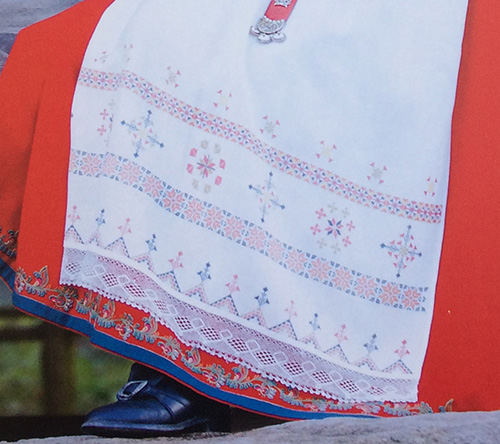 Norwegian traditional apron decorated with embroidery and lace
Norwegian traditional apron decorated with embroidery and lace


